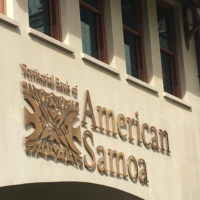
The Territorial Bank of American Samoa (TBAS) recently published its audited financial statements for the fiscal year ending September 30, 2023. One of the most notable concerns highlighted in the bank’s statements is the significant decline in the bank’s loan balances over the past four years.
A detailed comparison of TBAS’s loan balances from 2020 to 2023 shows a persistent downward trend:
- 2020: $56.65 million
- 2021: $44.81 million
- 2022: $38.11 million
- 2023: $29.36 million
This represents a decline of approximately 48% from 2020 to 2023, raising questions about the underlying causes and future implications for the bank.
Several key factors have contributed to this decline in loan balances. TBAS discontinued multiple loan programs, such as the Dedicated Funding, SBA, and SMI programs. This strategic move reduced the volume of new loans originated, significantly impacting the loan portfolio.
Both local and global economic conditions have played a role. While American Samoa’s local economy has remained relatively stable, global economic uncertainties, inflationary pressures, and the after effects of the COVID-19 pandemic have likely affected borrowers’ ability and willingness to take on new loans.
The financial statements indicate a decrease in purchased vehicle loans and commercial equipment loans. These reductions have further contributed to the overall decline in loan balances.
Another critical metric impacted by the decline in loan balances is the loan-to-deposit (LTD) ratio. This ratio measures the proportion of the bank’s loans to its deposits and is a key indicator of liquidity and lending practices.
- 2020: 58.3% (calculated as $56.65 million in loans / $97.15 million in deposits)
- 2021: 46.1% (calculated as $44.81 million in loans / $97.26 million in deposits)
- 2022: 41.0% (calculated as $38.11 million in loans / $93.05 million in deposits)
- 2023: 24.5% (calculated as $29.36 million in loans / $119.92 million in deposits)
The significant drop in the LTD ratio from 58.3% in 2020 to 24.5% in 2023 underscores the bank’s reduced lending activities relative to its growing deposit base.
For context, the average LTD ratio for banks in the United States typically ranges from 80% to 90%. TBAS’s LTD ratio is substantially below this industry standard, indicating a more conservative approach to lending or potential challenges in generating loan demand.
As a government-owned bank, TBAS was established with the mission to inject liquidity into the American Samoa economy through active lending. The bank was expected to provide essential banking services and facilitate economic growth by offering loans to individuals, businesses, and government entities.
However, the low LTD ratio reflects a significant underperformance in this regard.
The bank’s inability to maintain a robust lending portfolio means it has not fully capitalized on its role as a financial catalyst for the local economy.
Compounding the issue of declining loan balances, TBAS has increasingly allocated a substantial portion f its customer deposits to investments outside of American Samoa instead of making local loans. This strategic decision, while aimed at managing risk and seeking higher returns, has had significant implications.
The financial statements reveal that TBAS has increased its investments in U.S. Treasury securities and other financial instruments outside of American Samoa. While these investments may offer stability and returns, they do not contribute directly to the local economy’s liquidity or growth.
The decrease in loan balances has several implications for TBAS’s financial performance. Loans are a primary source of interest income. With fewer outstanding loans, TBAS’s interest income from loans has decreased.
In FY 2023, interest income from loans was reported at $3.71 million, down from $4.19 million in FY 2022. This decline directly impacts the bank’s profitability.
Despite the decline in loan balances, TBAS managed to increase its net interest income to $12.39 million in FY 2023 from $5.44 million in FY 2022, primarily due to effective interest rate management and a significant increase in interest income from investments.




